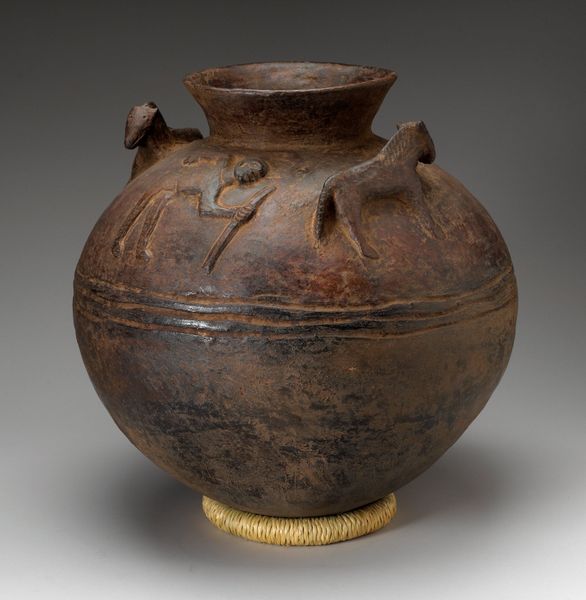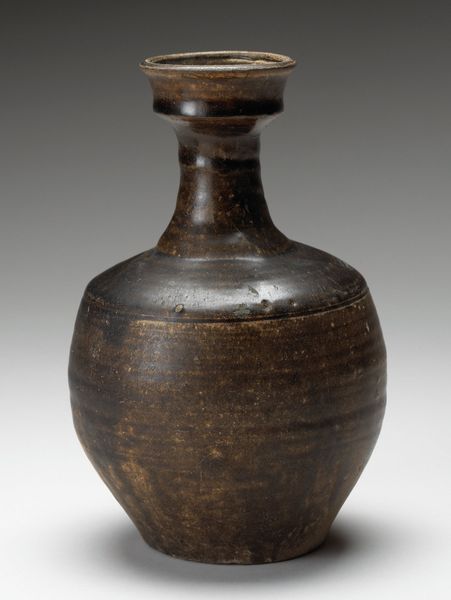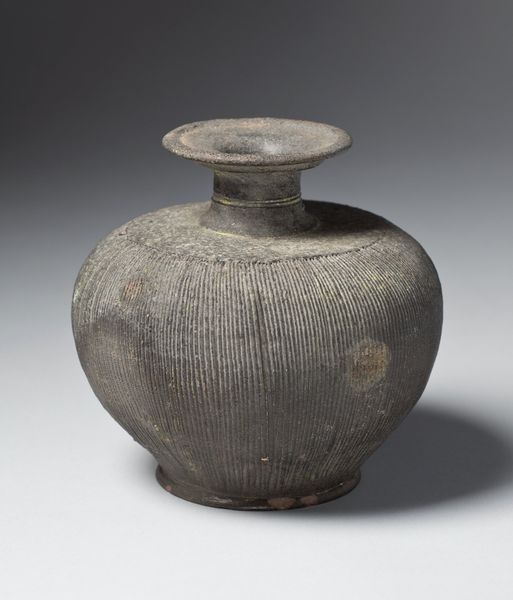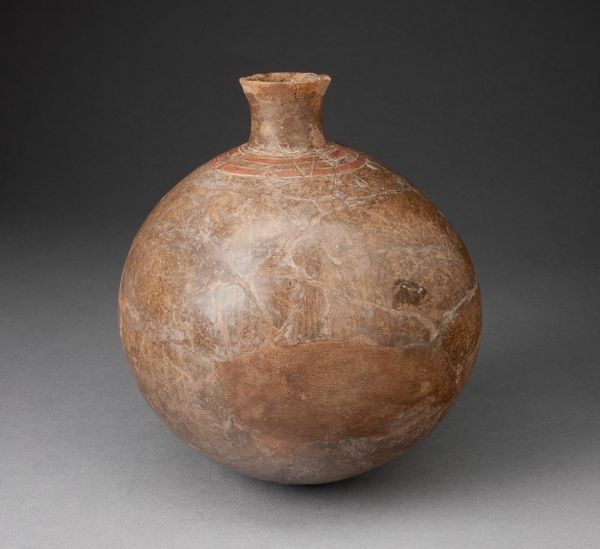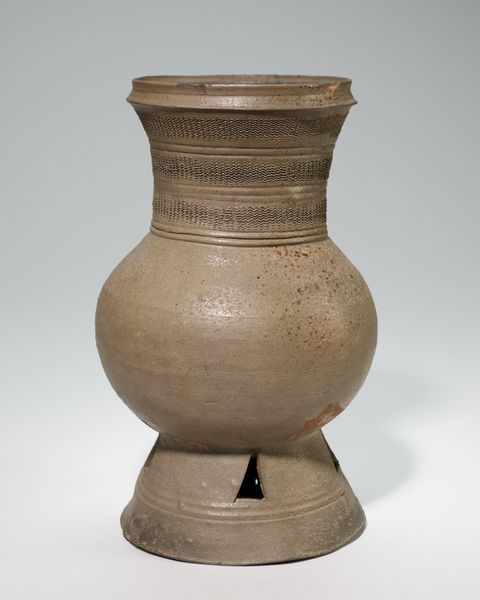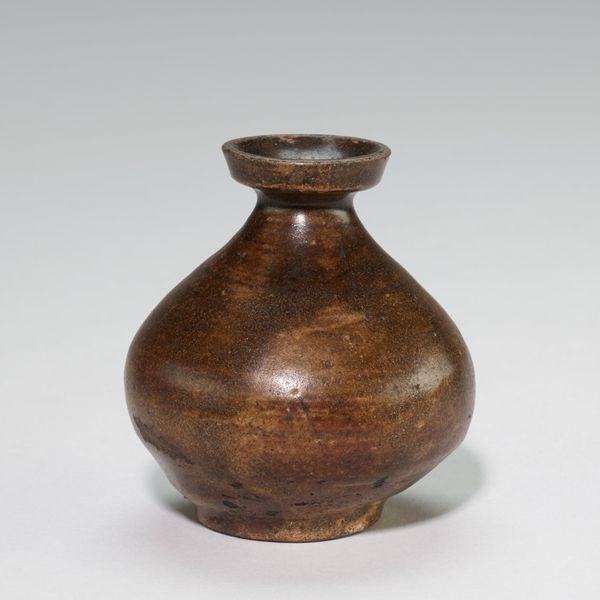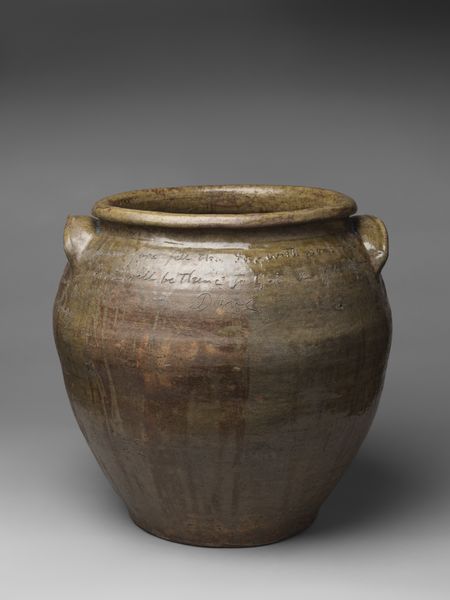
ceramic, earthenware, sculpture
#
ceramic
#
earthenware
#
geometric
#
sculpture
#
ceramic
Dimensions: 15 13/16 x 13 1/4 x 13 1/4 in. (40.16 x 33.66 x 33.66 cm)
Copyright: Public Domain
Curator: Editor: Here we have an earthenware sculpture by a Nupe artist, titled "Vessel," likely made sometime in the 20th century. It has such an earthy presence. I'm interested in knowing, what does this vessel evoke for you? Curator: What strikes me is the overt functionality paired with the level of surface articulation. Consider the labor invested in forming this object, from the extraction and preparation of the clay to the coiling, firing, and decoration. We see geometric patterns painstakingly applied, likely through impressing or perhaps resist techniques. These weren't frivolous decorations; they speak to a sophisticated understanding of materials and their manipulation, reflecting cultural values related to utility and aesthetics within the community that created it. What does the straw base tell you about its creation? Editor: The base looks pretty carefully made. You’re saying it represents a synthesis of art and craft. It definitely blurs the distinction between ritualistic function and art object. Do you think the repeated lines denote something? Curator: Absolutely. The repetitive nature of those incised lines suggests a meditative process, labor literally inscribed onto the surface. And considering that the vessel itself was likely used for water storage or perhaps libations, what kind of statement do you think is being made with this kind of craft that’s also practical? Is the medium itself communicating its worth in its own language? Editor: Yes, almost like the maker wanted to elevate a common object. I now see the beauty is as much in the making, as it is in the using! Curator: Exactly! And in its journey through use and, eventually, its arrival in a museum, it transcends the material.
Comments
No comments
Be the first to comment and join the conversation on the ultimate creative platform.
